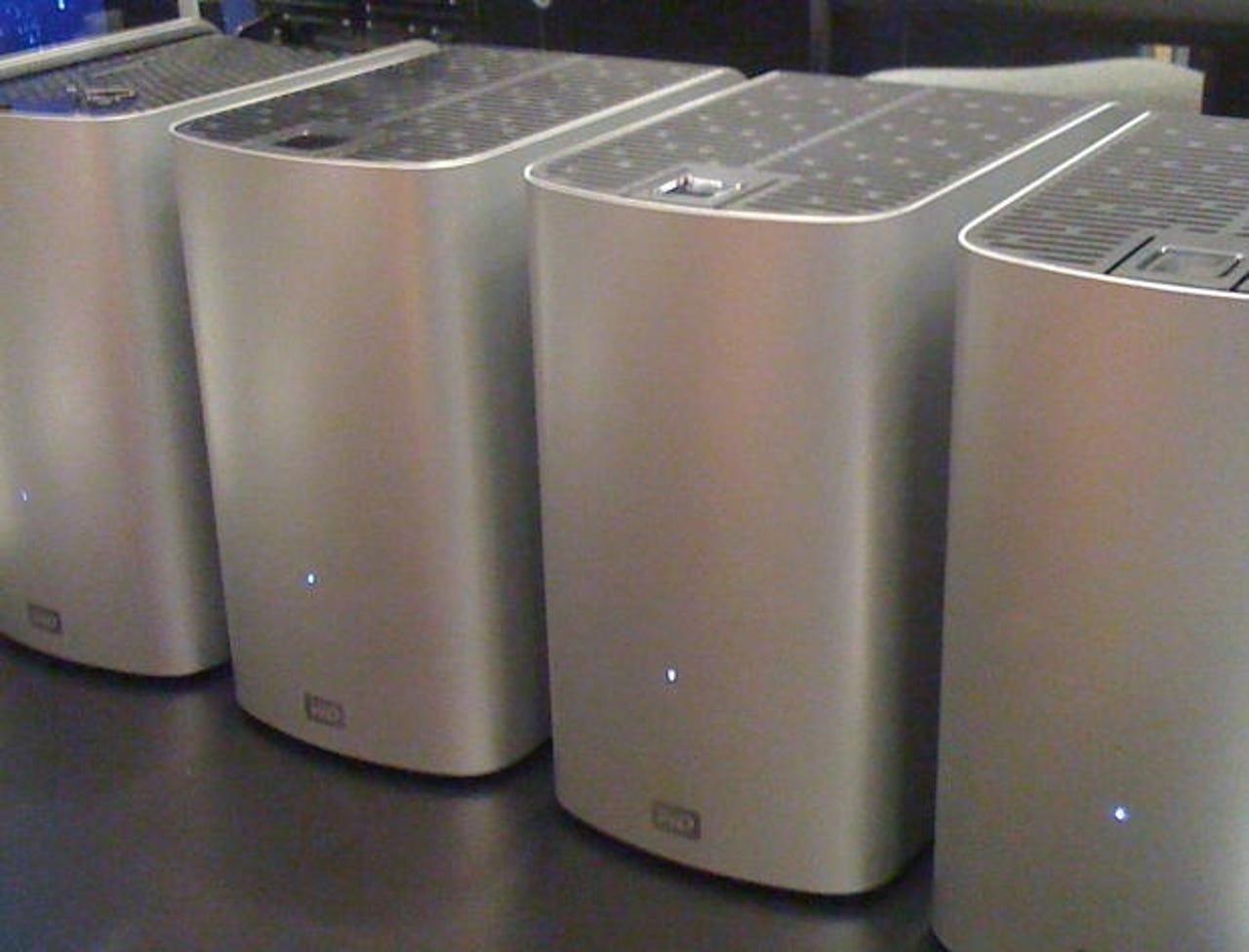Where are all the Thunderbolt peripherals?

At the recent San Francisco Macworld Expo/iWorld Expo, several storage vendors showed forthcoming Thunderbolt drives, and at last month's International CES in Las Vegas, vendors announced a wider number of Thunderbolt-enabled devices. But really, why haven't more Thunderbolt products already hit the market?
At Expo, Western Digital gave a peek of its My Book Thunderbolt Duo storage systems, which will ship sometime in the first quarter, a product manager said. The two-drive striped systems will come in 4TB and 6TB capacities, both currently unpriced. Users can daisy chain up to 6 systems.
The hard disk drives are accessible by flipping open the top of enclosure. As you can see below, the WD systems look like aluminum hardcover books.
In addition, Seagate showed its GoFlex Desk Thunderbolt Adapter, which was announced at CES. The adapter, which supports the company's GoFlex hard disk drive enclosures, will ship in the first quarter. Currently, the adapter supports FireWire 800 and USB 2.0. In addition, I spied a smaller, portable adapter on display.
At CES there were a good number of Thunderbolt devices shown, most due sometime this year, some expected soon and others as long as the last quarter. A number were "demonstrations," which are for technology vendors as concept cars are for auto manufacturers. We may see them as SKUs but maybe not.
Owners of eSATA drives — popular in the video-editing set, with many connected to ExpressCard/34 adapter cards on previous generations of MacBook Pros as well as desktop interfaces — will be interested in LaCie's eSATA Hub Thunderbolt Series, which will offer pairs of Thunderbolt and eSATA ports. It is due to ship in the first quarter, the company said.
Certainly, Thunderbolt will be introduced to some PCs this coming year. But it will be here and there, testing the market, and nothing like Apple's putting the interface across its hardware lines.
However, one might expect that almost a year following Thunderbolt's introduction there would be more Thunderbolt-enabled products shipping. Available now on the Apple Store are Apple's Thunderbolt Display, LaCie's Little Big Disk Thunderbolt 2-drive systems, Promise's Pegasus 4- and 6-bay, hardware-based RAID systems, and Promise's SANLink Thunderbolt to 4Gbit/s Fibre Channel Adapter. Oh, and an Apple cable. Total: 5 basic products from a limited group of vendors.
Available elsewhere are a number of products for the professional video market, including several video capture/playback adapters such as the AJA Video Systems' io XT and the BlackMagic Design's UltraStudio 3D and Matrox's MXO2 Mini MAX aimed at Final Cut Pro workflows.
Sonnet Technologies offers a rather expensive adapter for connecting ExpressCard/34 cards, called the Sonnet Echo ExpressCard/34 Thunderbolt Adapter.
This appears to me to be a rather short list, especially with the numbers of Macs that have been sold this year with Thunderbolt ports. I observe that Mac users have always loved high-performance, local storage and that's the ticket with Thunderbolt.
So, what's the holdup? On the show floor, I happened upon an engineer with long experience in the Mac storage market and he put the blame on fundamental cost issues and growing pains with a new technology.
This engineer, who declined attribution, said that the first generation Thunderbolt controllers are considered expensive by device makers — he didn't supply a figure but reports are that they are in the $20 to $25 range — and certainly more than the minimal costs for USB 2.0 and FireWire. Anything that adds cost to a commodity product is a problem for device makers.
Intel supplies the Thunderbolt chipsets. The next-generation controllers will be less expensive, perhaps by a half, he said. According to reports. there will be multiple chipsets for different applications and performance perimeters. However, the arrival on the market of these chipsets is later in this year and perhaps later by the time the technology is productized.
If vendors calculate that they can reduce production costs by waiting for the next-generation chipsets, then they will wait. Some vendors may also figure that as a new technology, the demand for Thunderbolt is slightly nascent. With the addition of PC market systems, the installed base of Thunderbolt machines will grow quickly later this year or in 2013, so waiting may make sense for many companies.
The engineer also said that vendors were experiencing growing pains with the software tools Intel has provided for development. It's not what it needs to be for all needs.
Worse for some vendors, he admitted, is dealing with Apple. It can be a bit of a trial. It's never been easy to get a device qualified for sale with Apple or for the Apple Store. On top of the usual hassles with Apple qualification and interoperability, here with Thunderbolt developers are dealing with a new technology.
This all sounds similar to the market's past growing pains with FireWire, which was initially developed at Apple. Perhaps we will see an independent consortium of developers created to get some of the testing and qualification issues out from under Intel and Apple's wings.
